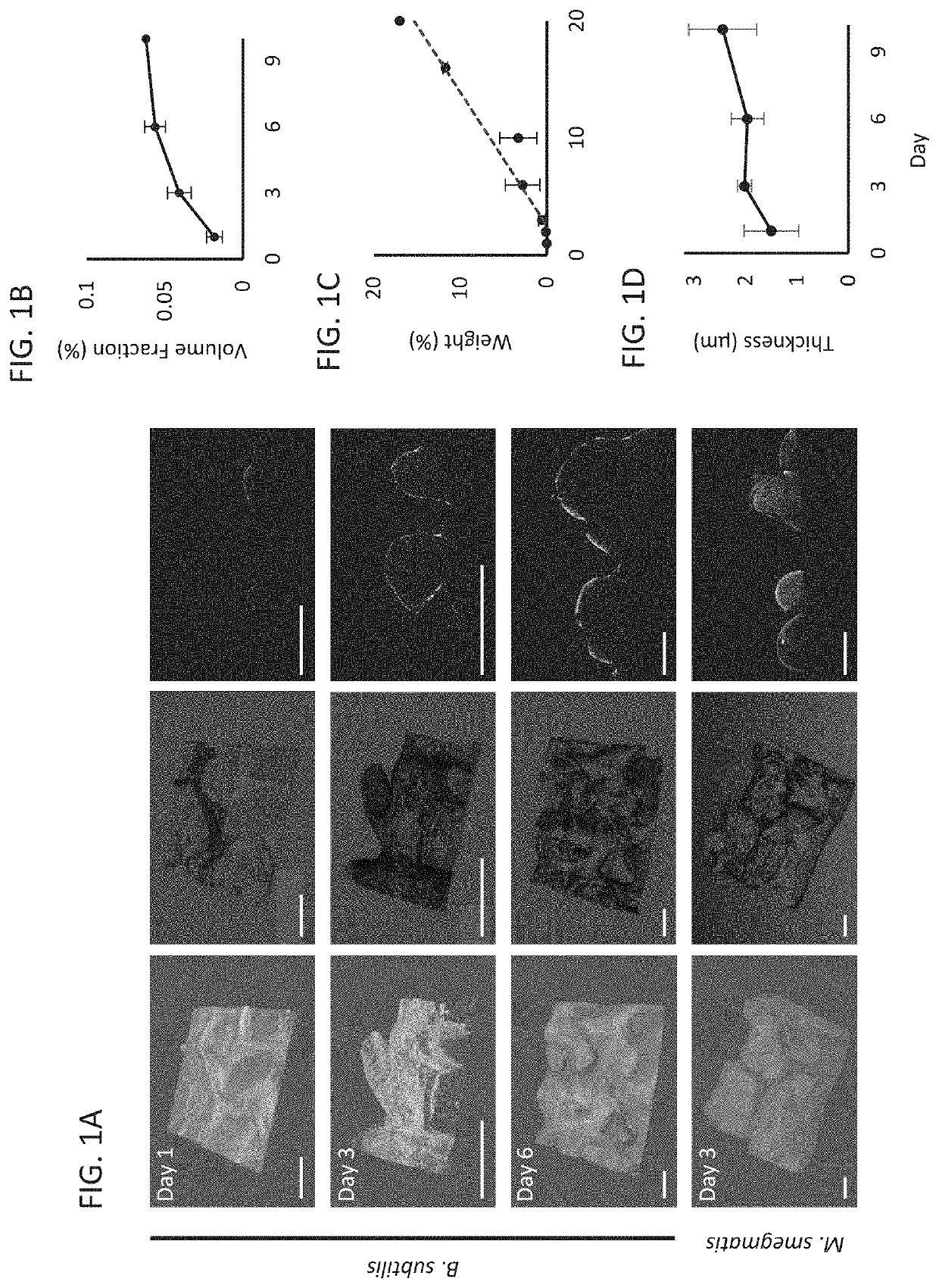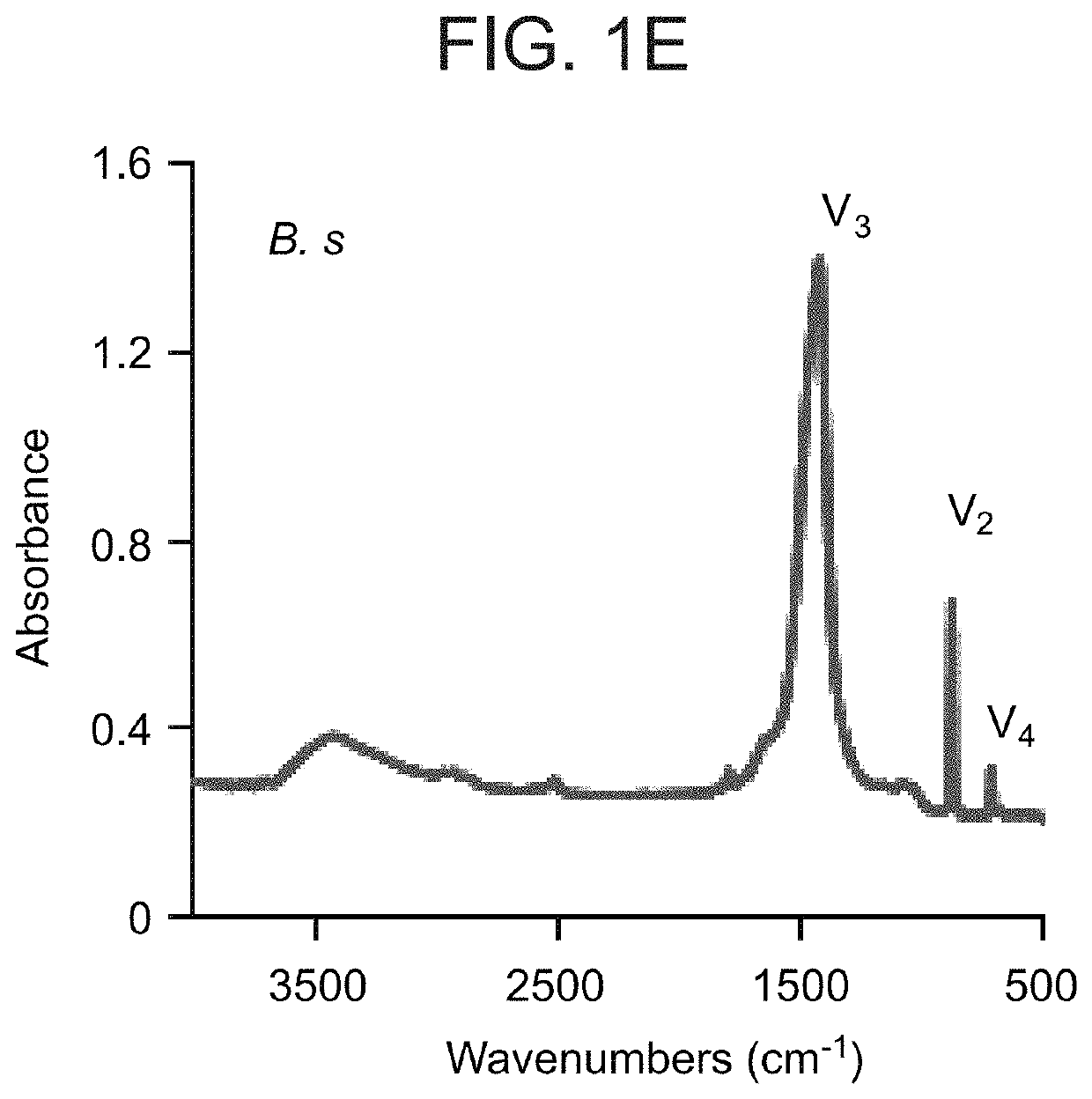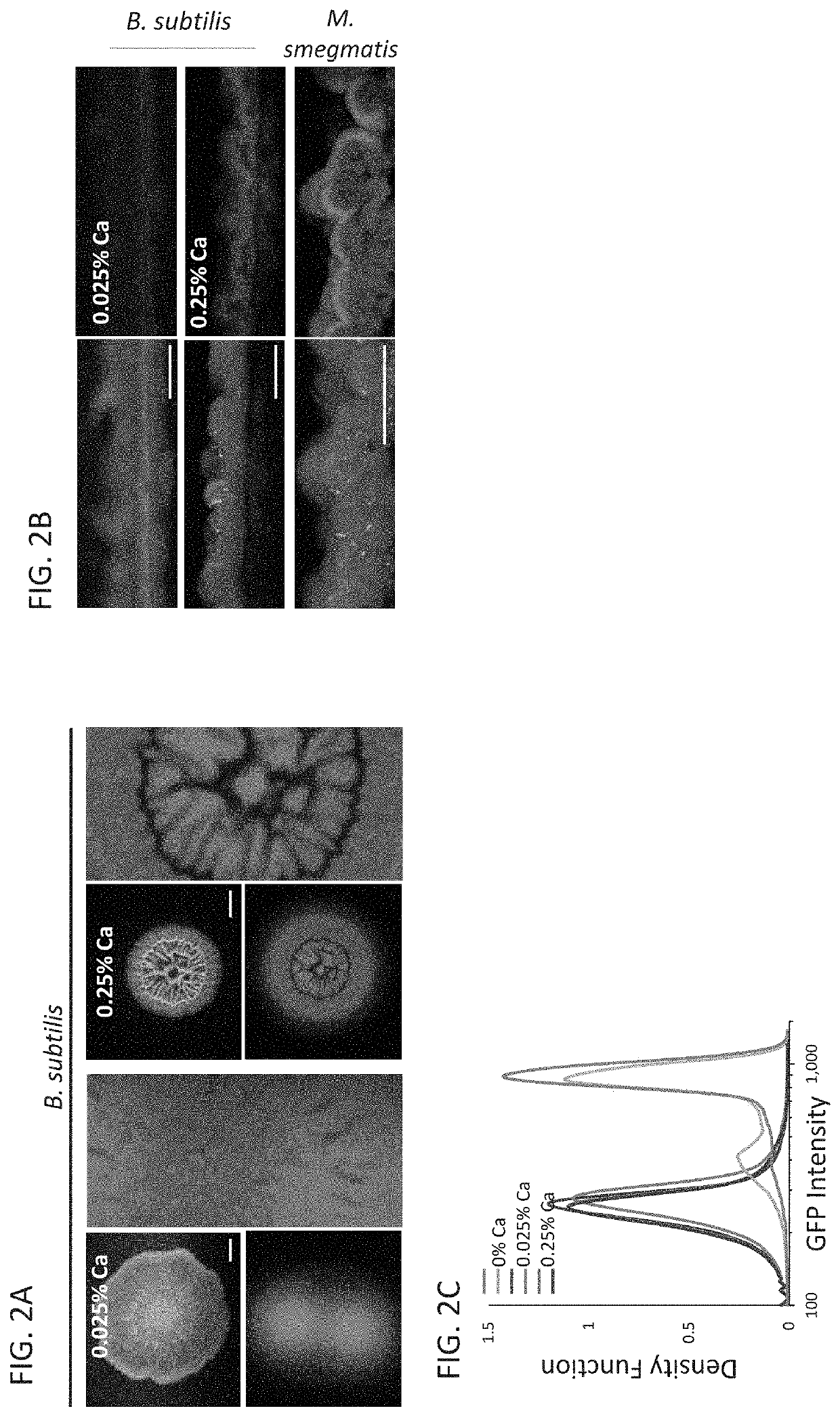Methods of disrupting a biofilm and/or preventing formation of same
a biofilm and a technology of a biofilm are applied in the field of methods of disrupting a biofilm and/or preventing formation of same, which can solve the problems of difficult elimination of infections associated with biofilm growth, harmful bacteria are or become sessile, etc., and achieve the effects of increasing the sensitivity of the biofilm-producing bacteria
- Summary
- Abstract
- Description
- Claims
- Application Information
AI Technical Summary
Benefits of technology
Problems solved by technology
Method used
Image
Examples
example 1
Extracellular Calcium Carbonate Sheets Serve as Diffusion Barriers in Bacterial Biofilm
[0624]Micro-CT which allows obtaining complete 3D information on opaque samples was used to study the detailed inner structure of calcium minerals within biofilm colonies. As this technique detects structured calcium (such as aggregates and crystals), but not amorphous calcium or calcium salts with organic substances, it can be used for identifying and analyzing calcium deposits.
[0625]To this end, the development of calcium-rich structures in B. subtilis colonies grown on biomineralization-promoting medium containing 0.25% calcium acetate was evaluated. 3D reconstruction revealed intricate macro-scale structures (FIG. 1A, left panel). The observed structures were highly reminiscent of the biofilm wrinkles in time of development, form and location. Of note, no mineral was produced by B. subtilis colonies grown on media lacking calcium ions (data not shown). Fourier transform infrared (FTIR) spectro...
example 2
Urease and Carbonic Anhydrase Inhibitors Prevent Biomineralization and the Formation of Protective Diffusion Barriers
[0633]The effects of inhibiting activity of two intracellular enzymes which promote calcium carbonate precipitation: carbonic anhydrase and urease on biofilm formation and antibiotic resistance were evaluated.
[0634]Carbonic anhydrase is of essential role in biomineralization as CO2 is converted to carbonic acid by carbonic anhydrase: CO2+H2O->H2CO3, followed by bicarbonate production H2CO3->HCO3−+H+.
[0635]Additionally, biomineralization associated with microbial metabolism is usually accompanied by increase in environmental alkalinity, which promotes calcium carbonate precipitation14. One of the central reaction leading to the increased pH is catalyzed by the enzyme urease (FIG. 3A)25. The microbial ureases hydrolyze urea to produce carbonate and ammonia, simultaneously increasing the pH and the carbonate concentration, which then combines with environmental calcium t...
example 3
Urease and Carbonic Anhydrase Inhibitors can be Used for Preventing and / or Treating Colonization of P. aeruginosa Biofilms in Lungs of CF Patients
[0640]The following complementary setting are used to evaluate biomineralization in P. aeruginosa biofilms and the effect of urease inhibitors (e.g. AHA, N-(n-butyl)thiophosphoric triamid, ecabet sodium, Epiberberin) and / or carbonic anhydrase inhibitors [e.g. Diamox (Acetazolamide), 5,5′-Dithiobis (2-nitrobenzoic acid, DTNB), sulfumates, sulfamides, brimonidine, N,N-diethyldithiocarbamate, phenylboronic acid, phenylarsonic acid]:
[0641](i) in vitro colony development model [e.g., Kempes, et al. Proceedings of the National Academy of Sciences of the United States of America (2014) 111: 208-213];
[0642](ii) Submerged biofilm model where the biofilm is formed on the bottom of 24 well plates in rich biofilm media [Kolodkin-Gal et al. Science (2010) 328: 627-629] as well as in ASM [Kirchner et al. Journal of visualized experiments: JoVE, (2012) e...
PUM
| Property | Measurement | Unit |
|---|---|---|
| size | aaaaa | aaaaa |
| angles | aaaaa | aaaaa |
| pixel size | aaaaa | aaaaa |
Abstract
Description
Claims
Application Information
 Login to View More
Login to View More - R&D
- Intellectual Property
- Life Sciences
- Materials
- Tech Scout
- Unparalleled Data Quality
- Higher Quality Content
- 60% Fewer Hallucinations
Browse by: Latest US Patents, China's latest patents, Technical Efficacy Thesaurus, Application Domain, Technology Topic, Popular Technical Reports.
© 2025 PatSnap. All rights reserved.Legal|Privacy policy|Modern Slavery Act Transparency Statement|Sitemap|About US| Contact US: help@patsnap.com



